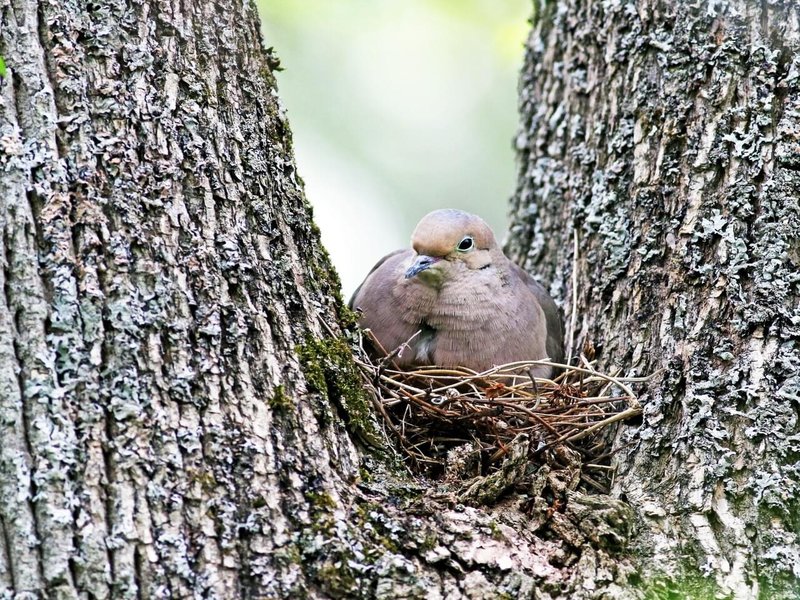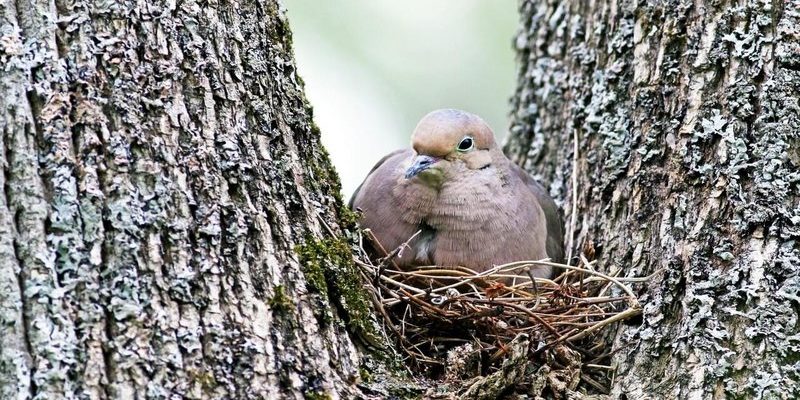
Imagine a dove, carefully selecting twigs and leaves, weaving them together to create a cozy nest. It’s not just a random pile of sticks; it’s a safe haven for their future little ones. Just like us, doves take care in choosing their living conditions, ensuring they have a safe spot to nurture their young. So, let’s dive into the world of dove nesting habits and lifecycle—we’ll explore how they make their nests, what they do during breeding season, and how their young develop.
Understanding Dove Nesting Habits
Doves are natural builders. They choose their nesting sites based on safety and comfort, often looking for spots that provide cover from predators. Common locations include tree branches, shrubs, and even human-made structures like ledges or balconies. You might find them perched in your garden, bringing a touch of nature right to your doorstep.
When a pair of doves decides to settle down, they go about gathering materials for their nest. These materials usually consist of twigs, grass, and leaves. Here’s the thing: they don’t just toss these items together chaotically. Doves are quite meticulous. They’ll spend hours arranging and rearranging until the nest feels just right. It’s like a little architectural project, where every stick has its place.
Once the nest is complete, it’s time for the real magic to happen: laying eggs. Most doves typically lay one or two eggs per clutch, and the eggs are usually a pale color, making them blend into their surroundings. This camouflage is crucial for keeping the eggs safe from prying eyes.
The Breeding Season
Breeding season can vary depending on the dove species and their location, but in many areas, it starts in the spring and can last through summer. During this time, doves are especially active as they prepare for parenthood. You might notice a bit more cooing and fluttering as they display their affection for one another.
Doves engage in a courtship ritual that involves preening, bowing, and gentle nuzzling. It’s a dance of love that strengthens their bond before they begin to lay eggs. After the eggs are laid, both parents share the responsibility of incubation, which lasts about two weeks. This teamwork is vital, ensuring the eggs are kept warm and safe until they hatch.
Once the eggs hatch, the parents don’t just take a step back. They’re fully involved in raising their chicks, known as “squabs.” Doves produce a substance called pigeon milk from their crop, which they feed to their young. It’s an incredible process that showcases the commitment of the parents, ensuring their squabs get all the nutrients they need to grow strong.
Life Stages of Doves
Doves go through several distinct stages in their lifecycle. Initially, as eggs, they are fragile and rely entirely on their parents for warmth and nourishment. Once they hatch, the squabs emerge with fluffy down, looking quite unlike their parents. These little birds can’t fly or fend for themselves at first, which makes parental care critical during this early stage.
As the squabs grow, they start to develop feathers and begin to take short hops around the nest. This marks their transition to fledglings, where they learn essential skills like flapping their wings and stretching their legs. Honestly, it’s a bit like watching a toddler learn to walk; it takes time and plenty of practice before they can confidently take off into the sky.
Once they’re ready to leave the nest, young doves typically stick around their parents for a little while, learning how to forage for food and understand their environment. This close-knit family dynamic is crucial for their survival as they adapt to life outside the nest.
Nesting Challenges and Adaptations
While doves are generally resilient, they face several challenges when it comes to nesting. Predators are their biggest threat, including cats, hawks, and other birds of prey. To combat this, doves have adapted behaviors. For instance, they often choose high, hidden spots for nesting where they’re less likely to be seen.
Another challenge is the weather. Heavy rain or strong winds can damage nests or wash away eggs. Doves are aware of this risk, which is why they often build their nests in sheltered areas. For instance, if you see a dove nesting on your porch, it probably chose that spot for a reason—it’s a safe retreat from the elements!
In urban environments, doves have learned to thrive alongside humans. They might nest in garages or on window ledges, finding clever ways to adapt to new surroundings. This ability to adjust is part of what makes doves such successful creatures in various habitats.
Dove nesting habits and their lifecycle are a beautiful reminder of nature’s delicate balance. From the moment they choose a location for their nests to the day their young take flight, doves embody the resilience and love seen in the animal kingdom. Watching this process unfold can be incredibly rewarding, whether it’s from your window or on a nature walk.
As you appreciate the simple beauty of doves, you might find yourself more attuned to nature and the roles different creatures play in our ecosystem. So next time you hear a dove cooing outside, take a moment to recognize the story behind that sound. It’s the echo of life, love, and the remarkable journey of doves.

